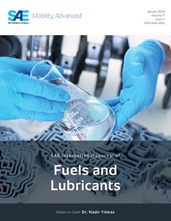Initial results are presented for the production of hydrogen from waste lubricating oil using a chemical looping reforming (CLR) process. The development of flexible and sustainable sources of hydrogen will be required to facilitate a "hydrogen economy." The novel CLR process presented in this paper has an advantage over hydrogen production from conventional steam reforming because CLR can use complex, low value, waste oils. Also, because the process is scalable to small and medium size, hydrogen can be produced close to where it is required, minimizing transport costs. Waste lubricating oil typically contains 13-14% weight of hydrogen, which through the steam reforming process could produce a syngas containing around 75 vol% H₂, representing over 40 wt% of the fuel. The waste oil was converted to a hydrogen-rich syngas in a packed bed reactor, using a Ni/ Al₂O₃ catalyst as the oxygen transfer material (OTM). An oil conversion rate based on carbon species (CO, CO₂ and CH₄) of up to ~95% was achieved. The steam to hydrogen conversion of 53%, accounted for 63% of the total H₂ produced, compared to the theoretical ideal of 67.4%. The syngas composition was initially ≻65 vol% H₂, 15 vol% CO, 15 vol% CO₂, and ≺5 vol% CH₄. Deterioration of the reactants conversion, specifically steam, was observed over repeated cycles indicating fouling of the catalyst. This was not by carbonaceous deposits, which were eliminated during the cycle's alternated oxidation steps, but could be by trace additives within the lubricating oil. Further work is planned in order to overcome this issue.
